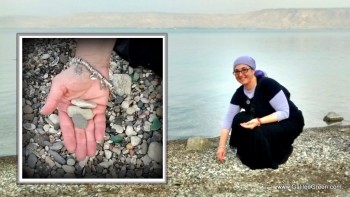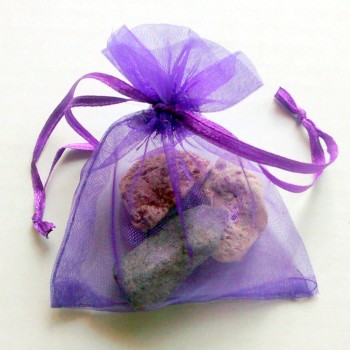| א יֹשֵׁב, בְּסֵתֶר עֶלְיוֹן; בְּצֵל שַׁדַּי, יִתְלוֹנָן. |
1 Whomever dwells in the refuge of the Most High, he shall dwell in the shadow of the Almighty; |
| ב אֹמַר–לַיהוָה, מַחְסִי וּמְצוּדָתִי; אֱלֹהַי, אֶבְטַח-בּוֹ. |
2 I will say of the LORD, ‘He is my refuge and my fortress, my God, in whom I trust,’ |
| ג כִּי הוּא יַצִּילְךָ, מִפַּח יָקוּשׁ; מִדֶּבֶר הַוּוֹת. |
3 That He will deliver you from the snare of the trap, and from devastating pestilence. |
| ד בְּאֶבְרָתוֹ, יָסֶךְ לָךְ–וְתַחַת-כְּנָפָיו תֶּחְסֶה; צִנָּה וְסֹחֵרָה אֲמִתּוֹ. |
4 He will cover you with His pinions, and under His wings shall you take refuge; His truth is a shield and armor. |
| ה לֹא-תִירָא, מִפַּחַד לָיְלָה; מֵחֵץ, יָעוּף יוֹמָם. |
5 You shall not be afraid of the terror by night, nor of the arrow that flies by day; |
| ו מִדֶּבֶר, בָּאֹפֶל יַהֲלֹךְ; מִקֶּטֶב, יָשׁוּד צָהֳרָיִם. |
6 Of the pestilence that walks in darkness, nor of the destruction that lays waste at noon. |
| ז יִפֹּל מִצִּדְּךָ, אֶלֶף–וּרְבָבָה מִימִינֶךָ: אֵלֶיךָ, לֹא יִגָּשׁ. |
7 A thousand may encamp at your side, and ten thousand at your right hand; but they shall not come near you. |
| ח רַק, בְּעֵינֶיךָ תַבִּיט; וְשִׁלֻּמַת רְשָׁעִים תִּרְאֶה. |
8 You will only watch with your eyes, and you will see the retribution of the wicked. |
| ט כִּי-אַתָּה יְהוָה מַחְסִי; עֶלְיוֹן, שַׂמְתָּ מְעוֹנֶךָ. |
9 For you have [said] ‘the LORD is my refuge,’ you will have made the Most High, your dwelling place. |
| י לֹא-תְאֻנֶּה אֵלֶיךָ רָעָה; וְנֶגַע, לֹא-יִקְרַב בְּאָהֳלֶךָ. |
10 No evil shall befall you, neither shall any plague come near to your tent. |
| יא כִּי מַלְאָכָיו, יְצַוֶּה-לָּךְ; לִשְׁמָרְךָ, בְּכָל-דְּרָכֶיךָ. |
11 For He will give His angels charge over you, to protect you in all your ways. |
| יב עַל-כַּפַּיִם יִשָּׂאוּנְךָ: פֶּן-תִּגֹּף בָּאֶבֶן רַגְלֶךָ. |
12 They shall bear you upon their hands, lest you dash your foot against a stone. |
| יג עַל-שַׁחַל וָפֶתֶן, תִּדְרֹךְ; תִּרְמֹס כְּפִיר וְתַנִּין. |
13 You shall tread upon the lion and asp; the young lion and the serpent shall you trample under foot. |
| יד כִּי בִי חָשַׁק, וַאֲפַלְּטֵהוּ; אֲשַׂגְּבֵהוּ, כִּי-יָדַע שְׁמִי. |
14 ‘Because he has set his love upon Me, therefore will I deliver him; I will set him on high, because he has known My name. |
| טו יִקְרָאֵנִי, וְאֶעֱנֵהוּ–עִמּוֹ-אָנֹכִי בְצָרָה; אֲחַלְּצֵהוּ, וַאֲכַבְּדֵהוּ. |
15 He shall call upon Me, and I will answer him; I will be with him in trouble; I will rescue him, and bring him to honor. |
| טז אֹרֶךְ יָמִים, אַשְׂבִּיעֵהוּ; וְאַרְאֵהוּ, בִּישׁוּעָתִי. |
16 With long life will I satisfy him, and make him to behold My salvation.’ |






0 Comments